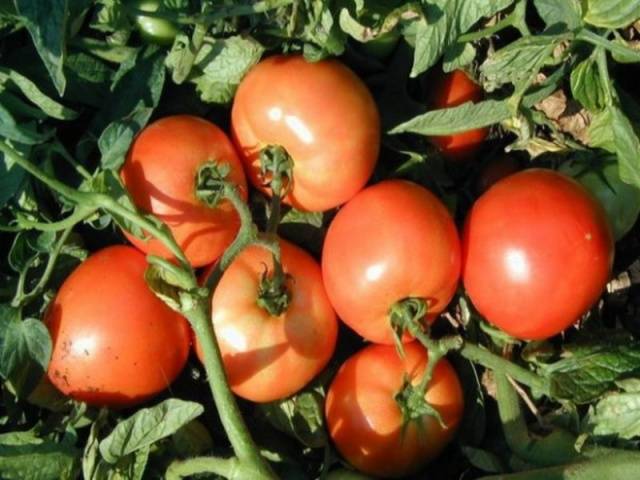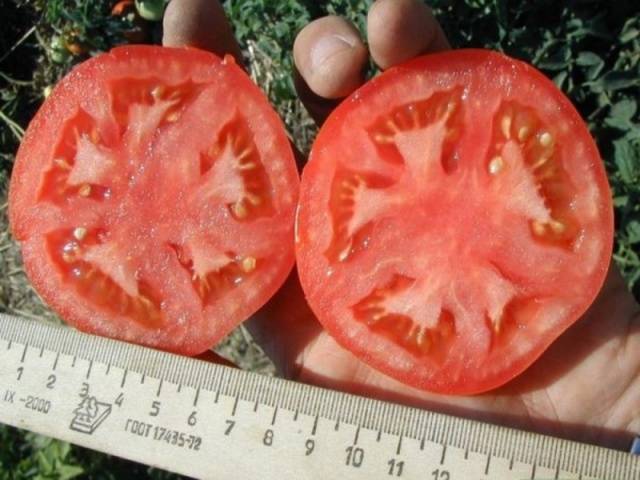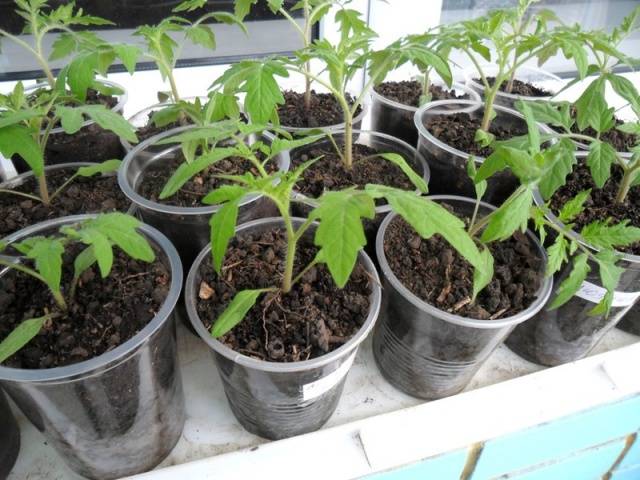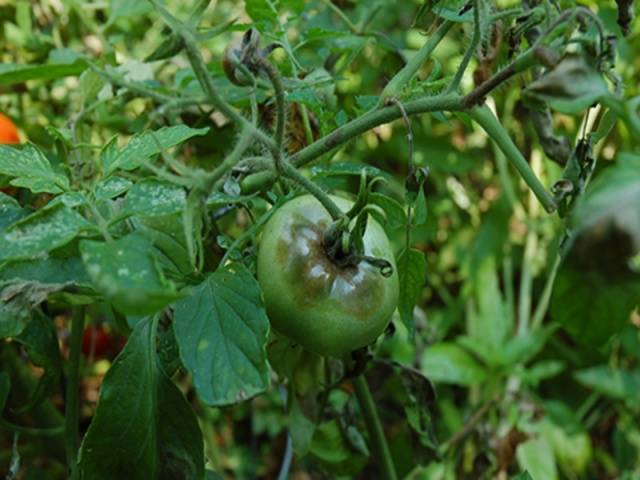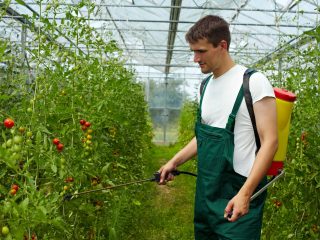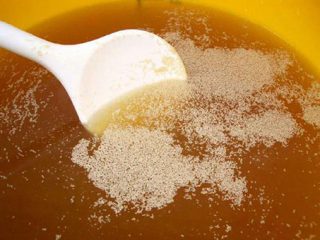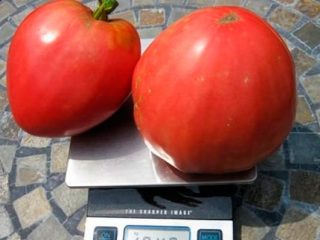Content
As a rule, experienced gardeners try to plant vegetables with different ripening periods on the site. Thanks to this, you can treat yourself to fresh fruits for a long time. And the early varieties of tomatoes in this regard are becoming a real find.
Description of the variety
The Bagheera F1 tomato is an early highly resistant hybrid. The determinant bush is 50-85 cm tall and has a compact shape. During the growth period, a green mass of medium volume is formed. Medium-sized dark green leaves have a simple shape.
The tomatoes ripen medium, weighing 85-245 g. A distinctive feature of the Bagheera tomato variety is that larger fruits ripen on the lower branches. In a brush, from 4 to 6 tomatoes are tied (as in the photo).
The yield is high - about 10 kg of magnificent Bagheera tomatoes can be harvested from a square meter plot.
The fruits are round, somewhat flat. It is worth noting the presence of a slight ribbing near the stalk.
Ripe tomatoes turn deep red. The color of tomatoes of the Bagheera F1 variety is monophonic, without spots. Moderately juicy, fleshy pulp has a pleasant, slightly sweet taste. At least six seed chambers are formed in a tomato (see photo).
The Bagheera fruit is characterized by the presence of thick walls and a thin, dense skin. This combination ensures good preservation of tomatoes (up to 30 days) and the ability to transport them over long distances. If the Bagheera tomatoes are harvested during the period of technical ripeness (green), then they ripen perfectly in warm conditions.
According to the hostesses, Bagheera tomatoes can be considered universal. Tomatoes are excellently canned and very tasty in salads and sauces.
Features of planting and care
The period from germination of tomato seeds to the appearance of the first ripe Bagheera tomatoes is approximately 86-99 days.
Growing seedlings
Since the seed producer carries out his own preparatory procedures (disinfection, hardening, culling), the Bagheera tomato grains can be planted immediately.
A mixture of garden soil, humus and peat is used as a fertile soil. If some components are absent or few, then you can buy ready-made soil for tomato seedlings in specialized stores.
- The soil is poured into a container, moistened and depressions (1-2 cm) are formed on the surface in the form of even rows.
- Tomato seeds Bagheera F1 are laid out in the recesses, covered with earth and the soil is slightly moistened.
- The box is tightly closed with a piece of polyethylene and placed in a warm room for the germination of Bagheera tomato seeds.
- As soon as the grains germinate, the container is placed in a bright place. When tomato seedlings grow two leaves, the seedlings can be placed in separate containers (cups).
During the period of growth of seedlings of the Bagheera variety, the seedlings are fed and periodically taken out into fresh air for hardening. By the time they are transplanted into the open ground, they should have been outdoors all day.
To plant the shoots of Bagheera F1 in a summer cottage, you need to choose a period when the threat of night frosts has already passed and the ground has warmed up enough. The optimal period is late May or early June.
It is better to do tomato planting in the afternoon or choose cloudy weather. In such conditions, it will be more comfortable for the sprouts to take root, and they will not wither.
Before planting seedlings, it is advisable to add compost, a little ash and urea to each harvested hole. It is recommended to use half a liter of wood ash per square meter, a bucket of compost / humus and urea - 1 tsp. The soil in the cups should be slightly moistened. This will help to gently reach the sprouts without damaging the root system.
The optimal hole depth is the cup height. If the seedlings of the Bagheera tomatoes were purchased without cups, then when planting the sprouts, make sure that the first leaf is not buried, but remains above the soil.
Watering tomatoes
For a good yield of the Bagheera F1 tomato, it is important to constantly monitor the moisture content of the soil. Otherwise, when the earth dries up, cracks form on the surface, which can damage the root system of young plants. During the period of growth and ripening of fruits, you can adhere to the following watering rates:
- when planting seedlings - about a liter and a half in each hole;
- during the flowering of Bagheera tomatoes - 20-25 liters per square meter of soil;
- when setting fruit - about 40 liters per square meter of land;
- during the period of fruit ripening and the formation of new ovaries - approximately 70 liters per plot per square meter.
As soon as harvesting begins, the amount of watering should be reduced. So it will be possible to prevent cracking of the Bagira variety and the possibility of infection with various diseases.
Naturally, all the figures given can be considered conditional. Since when regulating irrigation, other factors are also of great importance: the climatic features of the region, the composition of the soil, the location of the tomato planting (flat area or slope, north / south side).
In general, it is believed that watering Bagheera tomatoes should be infrequent, but abundant. If possible, it is advisable to use warm, settled water for irrigation. The drip irrigation system is the best option for watering the Bagheera variety tomatoes.
It is believed that loosening the soil should be carried out after each watering to a depth of about 10 cm. Deeper loosening can damage the root system of tomatoes.
It is also recommended to mulch the soil
Fertilizing the soil
Top dressing of Bagheera tomatoes is carried out in several stages.
The first time fertilizers are applied two weeks after planting seedlings on the site. Suitable composition of the mineral mixture per square meter of area: 8 g of nitrate / urea, 20 g of superphosphate and potassium salt.
After three weeks, phosphorus and potash fertilizers are added again. During the period of the growth of the bush, the formation of flowers and the formation of ovaries, you can use a special ready-made dressing "Sudarushka-tomato". This composition prevents the occurrence of fungal diseases and increases yields. A teaspoon of the mixture is dissolved in 10 liters of water and half a liter of solution is poured under each bush.
A complete feeding of the Bagheera F1 variety is also important during fruit ripening. To increase the yield and the appearance of new ovaries, nitroammofoska is used (2 tablespoons of fertilizer are dissolved in a bucket of water).
Garter bushes
When planting tomatoes in open ground, it is advisable to provide plants with protection from gusts of wind. Bagheera tomatoes do not grow very tall, however, given all the increasing cases of natural disasters, it is better to be on the safe side.
The support will not only fix the tomato bush, while ventilation is also provided. For supports, you can use stakes, sticks. Install them before planting seedlings. If the support is driven in after planting the shoots, damage to the root system of the Bagheera tomato is possible. Soft ropes (hemp or for packing) are used as garters.
Diseases and pests
A hybrid of Bagheera tomatoes is resistant to nematode infestation, not prone to fusarium or verticillary wilting.
Late blight is a fungal disease that affects not only the trunk, leaves, but also the fruits of tomatoes. You should pay special attention to fighting it. Since due to illness, the entire tomato crop can die in just a few days. The main causes of the disease: sudden changes in temperature, high humidity, thickening of the green mass.
The main way to combat is preventive measures. During watering, do not allow water to get on the stems, leaves of Bagheera tomatoes. With frequent rains and cold snaps, it is worth spraying the bushes with a 1% solution of Bordeaux liquid. When choosing a site for planting seedlings, preference is given to places with moderate ventilation. Tomatoes are planted after cucumbers, zucchini, cauliflower.
The Bagheera tomato is an excellent variety that guarantees a good harvest for both beginners and experienced gardeners.
